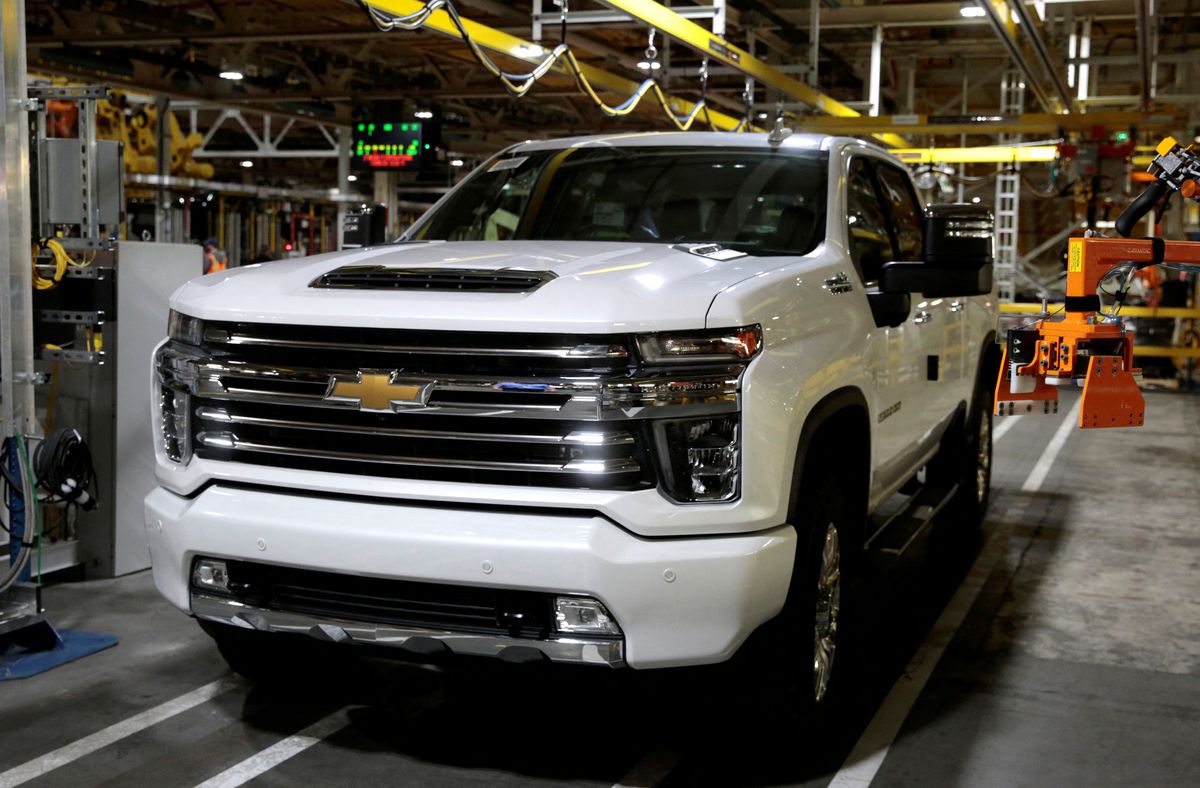GM and Stellantis are slapped with record-breaking fuel efficiency penalties
Back in 2012, the US Obama administration rolled out new requirements for carmakers to increase fuel efficiency each year.

A few minutes every morning is all you need.
Stay up to date on the world's Headlines and Human Stories. It's fun, it's factual, it's fluff-free.
The backstory: Back in 2012, the US Obama administration rolled out new requirements for carmakers to increase fuel efficiency each year, meeting a benchmark of around 55 miles per gallon by 2025. The idea was to reduce the country’s dependence on foreign oil, improve emissions and reduce how much people pay at the pump.
Then, during the Trump era, those standards were rolled back. In fact, Trump’s administration first suggested the standards be frozen until 2026 but eventually settled on a much lower annual fuel efficiency increase rate of 1.5%.
More recently: Last year, there was another flip-flop on the rules coming from the Biden administration. These new standards demand carmakers improve their fleet's fuel efficiency by 8% each year for the 2024 and 2025 models. And just to make things spicier, it wants a 10% boost by 2026. The big jump was meant to make up for progress lost when those fuel economy standards were rolled back by Trump. It also increased the penalties for not meeting these new standards.
One of the stipulations of these policies that Biden kept in place is that carmakers are allowed to purchase “credits” from other, more efficient automakers like electric vehicle producer Tesla or some of their more efficient model years to keep them in compliance. This is supposed to help the entire industry as it transitions over to EVs.
The development: Documents seen on Friday by Reuters are showing that car giants General Motors (GM) and Stellantis forked over a massive US$363 million in fines for falling short of fuel efficiency standards. Stellantis took a harder hit, paying US$235.5 million for its lackluster performance in model years 2018 and 2019. As for GM, it got smacked with US$128.2 million for its 2016 and 2017 model years.
Stellantis said the penalties are based on their past performance and not a sign of where the company’s headed now. And GM hadn’t paid a fine like this in about 40 years. It had initially intended to use that credit program to stay compliant but ended up deciding to just fork over the cash.
But here's the plan: GM is now aiming high and wants to meet those stricter fuel economy requirements. It's hoping to do it by using a mix of credits and fine payments until reaching its big goal of being all-electric by 2035.
Right now, the average fleet in the industry only gets a little over 25 miles per gallon in real-world driving. So, if other car manufacturers can't step up their game and meet the rules, they might end up facing similar civil penalties like the ones GM and Stellantis just shelled out.
Key comments:
“This reflects past performance recorded before the formation of Stellantis and is not indicative of the Company’s direction,” said Eric Mayne, a Stellantis spokesman.
"[As] we work towards the goal of a zero-emissions future, we may use a combination of credits from prior model years, expected credits from future model years, credits obtained from other manufacturers, and payment of civil penalties to comply with increasingly stringent CAFE regulations," said GM last week.
“Our final rule puts in place a sensible one national program that strikes the right regulatory balance that protects our environment, and sets reasonable targets for the auto industry,” said Environmental Protection Agency and the Department of Transportation Administrator Andrew Wheeler in 2020 when the Trump administration announced the updated fuel efficiency standards. “This rule supports our economy and the safety of American families.”




Comments ()